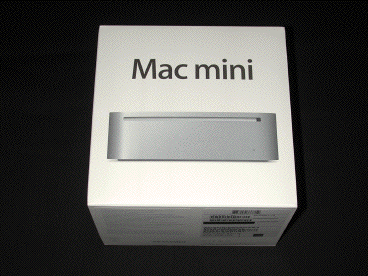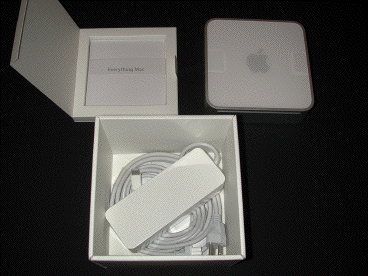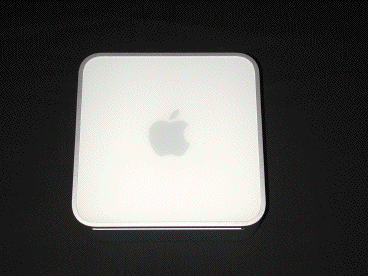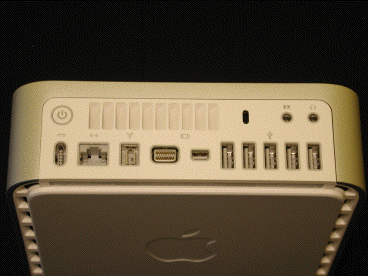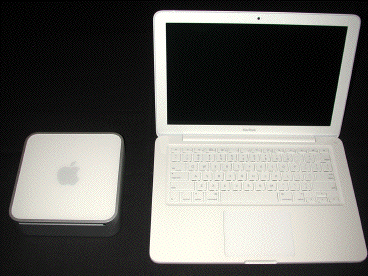Review: Late-2009 Mac mini
by Charles W. Moore & Steve Hildreth
Persistent rumors of the Mac mini's imminent demise were proved to be exaggerated on August 7, 2007, when Apple quietly released an updated Core 2 Duo Mac mini without even a press release heralding the refresh. The speed bump was welcome news to Mac mini fans and will keep the diminutive Mac on life support for a while yet at least.
With Apple's latest update to the Mac mini in October '09, the $799 Mac mini includes a 2.53GHz Intel Core 2 Duo processor, 4GB RAM, and a 320GB hard drive, while the $599 model comes with 2.26GHz Intel Core 2 Duo processor, 2GB RAM, and 160GB hard drive. Five USB 2.0 ports are included as welll as one FireWire 800 port, Gigabit Ethernet, and digital optical plus analog audio in/out. Mini-DVI out is included as well as the new Mini DisplayPort. Build-to-order options include hard drives up to 500GB, 4GB of memory, and a 2.66GHz CPU.
The Mac mini's petite 2-inch-tall, 6.5-inch-square anodized aluminum form factor remains essentially unchanged from when it was first introduced as a PPC G4 machine. The main change with the new minis are faster Intel Core 2 Duo processor, more RAM, and larger hard drives, so a real-world performance boost of 25% - 30% should be achievable. It's a substantial improvement over the previous models.
The latest Mac mini still has a 1066MHz frontside bus and NVIDIA GeForce 9400M integrated graphics 256MB memory. Video performance has improved in comparision to older minis with Intel GMA graphics, but it still lags the relatively robust video cards found in MacBook Pros, iMacs, and the Mac Pro.
Mac minis don't ship with a keyboard or mouse, so that cost will have to be factored in to a prospective purchase price along with a monitor if you don't have these items on hand. The thematic concept behind the Mac mini is that it facilitates an economical way to switch to the Mac platform from a Windows PC or upgrading an older Mac desktop setup, while retaining the investment you have in a monitor, keyboard, pointing devices, and other peripherals, which can just be plugged into the mini CPU module and you're good to go. Apple's choice to retain the Mini-DVI port for this model update, as opposed to going DisplayPort only, may be a nod to perspective PC switchers. If you don't already have a desktop computer setup, the economics are more dubious, especially given the mini's still relatively anaemic specification.
The Mac mini actually has a lot more in common with the MacBook than its desktop Mac stablemates. For instance, Mac minis come with 2.5" 5400RPM laptop type hard drives rather than the higher-performance 3.5" 7200RPM desktop drives that are pretty much standard in desktop computers these days. The mini also has a typical laptop array of I/O ports, a laptop-style optical drive, and the mini CPU weighs a pound and a half less than the lightest laptop Apple ever made. Apple saves space by moving the power supply unit out of the computer, so the power cord contains a rather large brick.
View a short walk-through of the late-2009 2.26GHz Mac mini:
We tested the late-2009 2.26GHz Mac mini. As with the MacBook Air and White MacBook, the mini is a perfectly acceptable computer for users whose main tasks consist of basic computing, web surfing, email, Office apps, storing digital photos, and manipulating lower-end videos. In reality, that probably represents 3/4 of the computing population. Primate Lab's Geekbench score show a marked improvement over previous Mac minis, and more in line with the White MacBook and MacBook Air. However, if you need more computing power, then steup to the 27" iMac or Mac Pro.
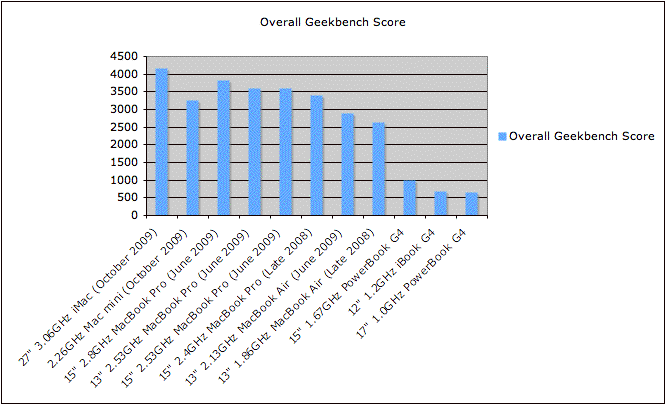
It can be hard to make an economic case for buying a mini compared with a low-end iMac, or even a MacBook, unless you already have a good monitor and input devices and just want it for a CPU module upgrade. While I really like the Mac mini concept in theory, it really doesn't compete with its iMac sibling on a value per dollar basis if you have to buy a monitor and the input devices.
If you're a laptop aficionado, the Mac mini does offer as close to the laptop virtues as we've seen yet in a desktop computer. The latest category trend in automobiles is the crossover - a sort of melding of the SUV concept with conventional sedans and stationwagons. Arguably, the Mac mini represents a computer crossover category - the transportable computer.
Whether a Mac mini is for you will depend on your individual needs and tastes, but our advice would be to take a good hard look at the iMacs and MacBook before taking out the plastic.
